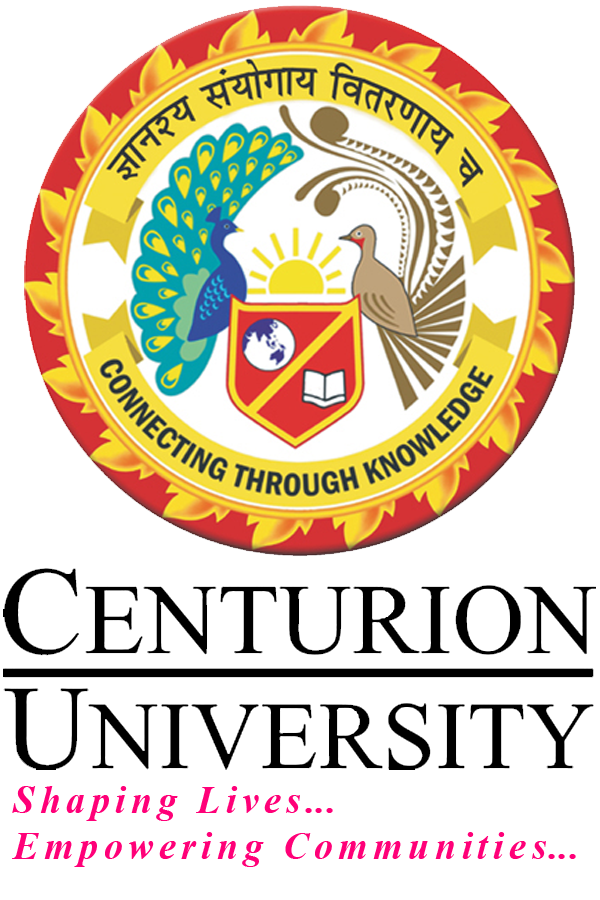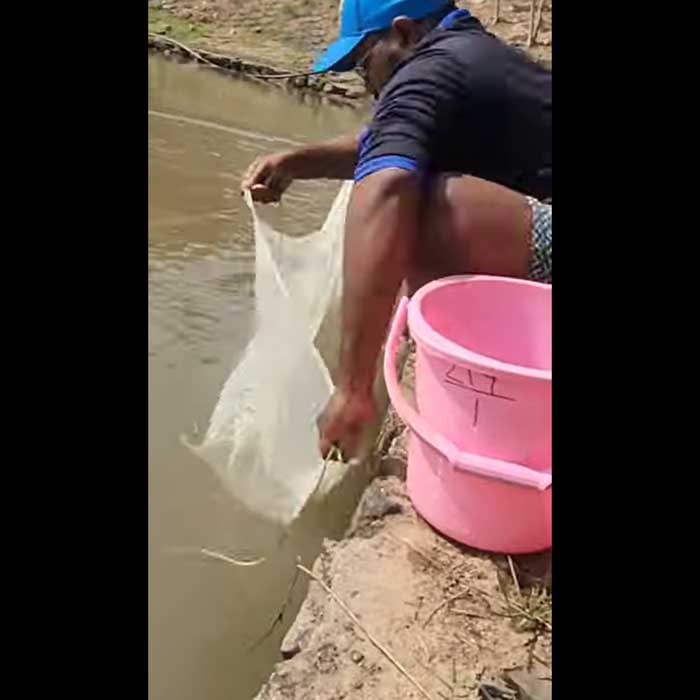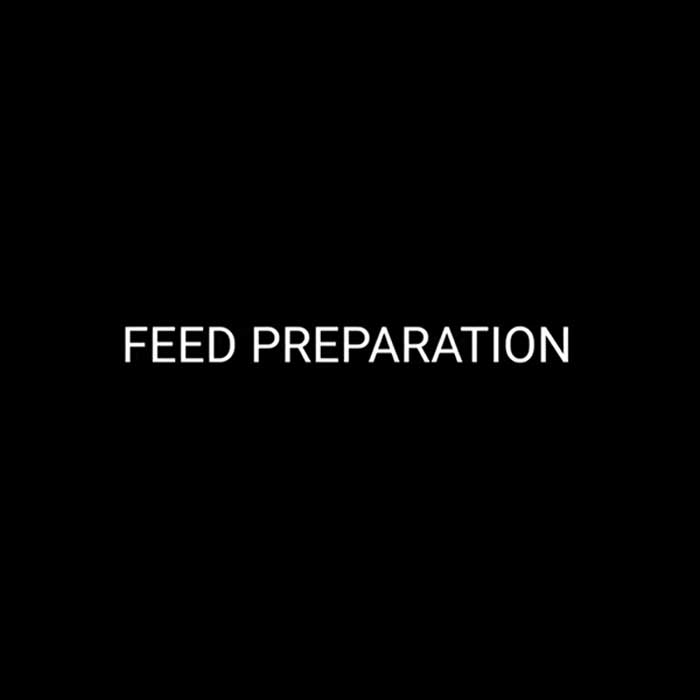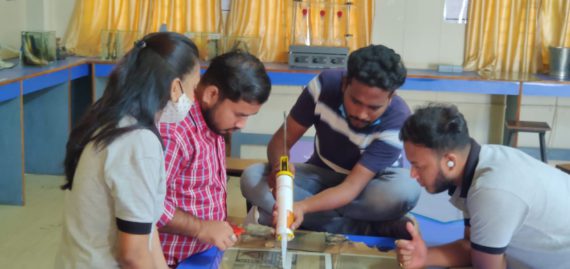In this domain students are encouraged to design aquaculturerearing systems like Biofloc, Recirculatory Aquaculture System, Aquaponicsas per the industry needs.Students learn to develop SOPs for commercial production of food and ornamental fish besides feed manufacturing and management, health management, water quality management. Students develop skills for seed production of Indian Major Carps, Tilapia, Gold Fish, Molly, Platy, Angel Fish, Guppy etc. The domain motivates the students in enhancing their entrepreneurship development capabilities in the field of aquaculture. The school is committed to use IOTs for developing smart intensive aquaculture for commercial production of fishes. The domain helps the students to be technically skilled and ready for career placement in industries and companies like fish and shrimp hatcheries, feed manufacturing companies, aquaclinics, research institutes and R&D departments.
Domain Track: Intensive Aquaculture
Course Attendees
Still no participant
Course Reviews
Still no reviews
Track Total Credits ( T-P-P): 3-15-11 (29 Credits)
Courses Division :
- Course 1 : Intensive Fish Rearing(1-2-0)
- Course 2 : Ornamental Fish Farming (1 -2-0)
- Course 3: Biofloc Aquaculture (1-2-0)
- Course 4: Framing of SOPs for Intensive fish culture and ornamental fish culture (0-3-0)
- Course 5: Health Management in Aquaculture (0-3-0)
- Course 6: Feed Management in Aquaculture (0-3-0)
- Course 7: Intensive production of Commercially important fishes in different Aquaculture production systems at Fish rearing Unit and pond (0-0-11)
Domain Track Objectives:
- To enable students to gain practical experience in industry-specific procedures.
- To provide students with a good understanding of how the various aspects of water quality affecting aquaculture.
- To provide an understanding of managing stock levels in an aquaculture setting
- To develop students’ experience of collation, presentation and interpretation of data collated during applied study
- To enable students to gain practical experience in industry-specific procedures.
- The students are involved in skill based learning of different aquaculture units such as Recirculatory Aquaculture System, Aquaponics, Biofloc and other intensive aquaculture production systems. They learn about principles, practices and engineering aspects followed during the operation of various intensive aquaculture systems.
- To provide students with a good understanding of how the various aspects of water quality affecting aquaculture.
- The students learn about various techniques to collect water samples and quantify different important water quality parameters for optimum wellbeing of the species.
- To provide an understanding of managing stock levels in an aquaculture setting
- Students learn about managing and handing culture operation of different fish and shell fish species.
- To develop students experience of collation, presentation and interpretation of data collated during applied study
- The students are encouraged to set up small aquaculture research projects, based on the experimental data students present and interpret the data.
Domain Track Learning Outcomes:
- Maintainance of Biofloc Unit
- Up-keeping of Ornamental Unit
- Pond Culture Maintainance
- Live food Unit Maintainance
Career Scope:
The domain helps the students to be technically skilled and ready for career placement in industries and companies like
- Fish and shrimp hatcheries
- Feed manufacturing companies,
- Aqua clinics,
- Research institutes
- Consultancy
- Entrepreneurships
Domain Syllabus:
1. Intensive Fish Rearing(1-2-0)
Theory:
- 1.1. History, definition, scope and significance of aquaculture
- 1.2. Site selection and planning for aquaculture operation
- 1.3. Criteria for selection of species for intensive aquaculture
- 1.4. Important water quality parameters for aquaculture
- 1.5. Aquaponics
- 1.6. Cageand Pen
- 1.7. Raceway Aquaculture
- 1.8. Intensive Pond Aquaculture systems
- 1.9. Sewage Aquaculture,
- 1.10. Aquamimicry and its prospects
Practicals:
- 1.1. Water quality estimation(pH and Temperature,Alkalinity)
- 1.2. Water quality estimation(Hardness)
- 1.3. Water quality estimation(Dissolved Oxygen)
- 1.4. Water quality estimation (Ammonia and Nitrate)
- 1.5. Water quality estimation (Phosphate and Chloride)
- 1.6. Working out the economic feasibility of construction and maintenance of different fish production systems
- 1.7. Preparation of species specific feed (Formulating Feed by Software and Pearson Method and selecting specific feed ingredients)
- 1.8. Preparation of species specific feed (Preparing Feed : Field Method)
- 1.9. Engineering aspects of Intensive Aquaculture production system (Cage Design)
- 1.10. Engineering aspects of Intensive Aquaculture production system (RAS Design)
- 1.11. Hands on experience on Intensive rearing of Fishes at pond
- 1.12. Hands on experience on Intensive rearing of Fishes at Fish rearing unit.
- 1.13. Engineering aspects of Intensive Aquaculture production system (Pen Design)
- 1.14. Engineering aspects of Intensive Aquaculture production system (Aquaponics)
- 1.15. Engineering aspects of Intensive Aquaculture production system (Flow through System)
- 1.16. Visit to a local aquaculture farm
Suggested Reading
- Aquaculture: Farming Aquatic Animals and Plants, by John S. Lucas
- Aquaculture: Introduction to Aquaculture For Small Farmers by Kenn Christenson
- Aquaculture, Resource Use, and the Environment by Author Claude E. Boyd and Aaron A. McNevin
2. Ornamental Fish Farming (1-2-0)
Theory:
- 2.1. International and national Status of ornamental fish trade
- 2.2. Biology of commercially important ornamental fishes
- 2.3. Breeding and culture of ornamental fishes-Live bearers
- 2.4. Breeding and culture of ornamental fishes-egg layers
- 2.5. Breeding and culture of ornamental fishes- nest builders
- 2.6. Diseases of aquarium fishes-causes, diagnosis and treatment
- 2.7. Principles of Aquascaping
- 2.8. Ornamental aquatic plants and their propagation
- 2.9. Economics of ornamental operations
- 2.10. Government schemes for developing ornamental fisheries
Practical:
- 2.1. Breeding of Commercially important variety of ornamental fishes (Angel and Gourami)
- 2.2. Breeding of Discus and Rosy Barb
- 2.3. Breeding of Fighter fish and Sword Tail
- 2.4. Aquascaping
- 2.5. Setting and maintenance of Aquarium
- 2.6. Layout of Advanced ornamental breeding
- 2.7. Layout of ornamental rearing facility
- 2.8. Propagation of Aquarium Plant- Submerged rooted plants
- 2.9. Propagation of Submerged Brunched Aquarium Plants
- 2.10. Propagation of Floating Aquarium Plants
- 2.11. Propagation of Emergent Aquarium Plants
- 2.12. Preparation and Setting up Biofilters
- 2.13.Transportation of Ornamental fishes
- 2.14.Ornamental Fish Diseases
Suggested Reading
- Ornamental Fish Culture and Aquarium Management by Anshuman D. Dholakia
- Fundamentals of Ornamental Fish Health by Helen E. Roberts
3. Biofloc Aquaculture (1-2-0)
Theory
- 3.1. Introduction to biofloc technology: Principles, prospects and challenges
- 3.2. Integration of submerged substrates in biofloc based system
- 3.3 Microbial role in biofloc system
- 3.4. Design consideration of biofloc production system
- 3.5 Biofloc technology for water quality management in aquaculture
- 3.6 Economics of biofloc based farming
- 3.7. Aeration requirements in biofloc based shrimp culture systems
- 3.8 Nutrition and feeding strategy and health management in a biofloc system
- 3.9 Culture technology of different fishes in biofloc system
- 3.10 Culture technology of different shellfishes in biofloc system
Practical
- 3.1. Biofloc generation and management methods through Natural method
- 3.2. Biofloc generation through Biological method,
- 3.3. Biofloc generation through Inoculation method
- 3.4. Biofloc generation through Probiotic method
- 3.5. Carbon nitrogen ratio maintenance
- 3.6. Importance of feed reduction
- 3.7. Suitable Carbon sources Identification
- 3.8. Qualitative measurement of biofloc
- 3.9. Quantitative analysis of biofloc,
- 3.10. Maintaining Biofloc culture system
- 3.11. Feed and Heath Management in Biofloc System
- 3.12. Microbial Quantification
- 3.13. Microscopy in bacterial identification
- 3.14. Carbohydrate fermentation test
- 3.15. Algal Characterization
Suggested Reading
- Biofloc Technology : SOPs for FLOC & Sludge Quality by S.Felix and M.Menaga
- Biofloc Technology: A Practical Guide Book by Yoram Avnimelech
4. Framing of SOPs for Intensive fish culture and ornamental fish culture (0-3-0)
Practice
- 4.1. Developing SOPs for culture operation in Aquaponics
- 4.2. SOPs for water quality management in Aquaponics
- 4.3. SOPs for feed Management of Fish and Plant Nutrient Management in Aquaponics
- 4.4. Developing SOPs for Ornamental fish rearing
- 4.5 SOPs for water quality Management in ornamental fish rearing
- 4.6 SOPs for feed Management in ornamental fish rearing
- 4.7 Developing SOPs for Ornamental fish breeding
- 4.8 Developing SOPs for culture operation in Intensive tank Aquaculture
- 4.9 SOPs for water quality management in Intensive tank Aquaculture
- 4.10 SOPs for feed Management in Intensive tank Aquaculture
- 4.11 Developing SOPs for culture operation in Intensive Pond Aquaculture
- 4.12 SOPs for water quality Management in Intensive Pond Aquaculture
- 4.13 SOPs for feed Management in Intensive Pond Aquaculture
- 4.14 SOPs for water quality Management for Biofloc Culture
- 4.15 SOPs for feed Management for Biofloc Culture
5. Health Management in Aquaculture (0-3-0)
Practice
- 5.1. Clinical signs, symptoms and treatment for bacterial diseases
- 5.2 Sampling, preparation of media and culture of pathogenic bacteria
- 5.3 Techniques in disease diagnosis- Microbiological
- 5.4. Techniques in disease diagnosis- haematological
- 5.5 Techniques in disease diagnosis-Immunological
- 5.6 Techniques in disease diagnosis- Biochemical tests
- 5.7 Agglutination test
- 5.8 Challenge tests
- 5.9. Clinical signs, symptoms and treatment for fungal diseases
- 5.10. Clinical signs, symptoms and treatment for viral diseases
- 5.11. Clinical signs, symptoms and treatment for parasitic diseases
- 5.12. Clinical signs, symptoms and treatment for protozoeal diseases
- 5.13. Histopathology of organs and its interpretation
- 5.14.Stress related study of fish and shellfish
- 5.15. Isolation of Nucleic Acids
6. Feed Management in Aquaculture (0-3-0)
Practice
- 6.1. Formulation of feeds using software
- 6.2. Identification of Suitable locally available feed ingredients
- 6.3. Proximate analysis for feed ingredients-Protein Analysis
- 6.4. Proximate analysis for feed ingredients-Fat/Lipid Analysis
- 6.5. Proximate analysis for feed ingredients-Carbohydrate Analysis
- 6.6. Preparation and formulating feeds for different fish/shellfish species ,
- 6.7. Mass Culture of Cladocerans
- 6.8 Mass Culture of Tubiflex
- 6.9 Mass Culture of Rotifer
- 6.10 Mass Culture of Infosoria
- 6.11 Mass Culture of Earthworm
- 6.12 Mass Culture of Copepod
- 6.13 Artemia hatching and Feeding
- 6.14 Mass Culture of Polycheate
- 6.15 Algal Culture technology
7. AELP linked with Domain :(0-0-11)
Practice
- Intensive production of Commercially important fishes in different Aquaculture production systems at Fish rearing Unit and pond
Session Plan for Domain:
Session 1.1
- History, definition, scope and significance of aquaculture
- Lecture 01 History, definition, scope and significance of aquaculture...

- Scope and significance of aquaculture...

Session 1.2
- Site selection and planning for aquaculture operation
- Lecture 2...

- Site Selection in Aquaculture...

Session 1.3
- Criteria for selection of species for intensive aquaculture
- lecture 3...

- Species selection in aquaculture...

Session 1.4
- Important water quality parameters for aquaculture
- Lecture 4...

- Water quality parameters in aquaculture...

Session 1.5
- Aquaponics
- lecture 5...

- Aquaponics...

Session 1.6
- Cage and Pen Culture
- lecture 6...

- cage and pen culture documentary...

Session 1.7
- Raceway Aquaculture
- Lecture 7...

- Raceway culture...

Session 1.8
- Intensive Pond Aquaculture systems
- lecture 8...

- In pond raceway...

Session 1.9
- Sewage Aquaculture
- lecture 9...

- Sewage Aquaculture Kolkata...

Session 1.10
- Aquamimicry and its prospects
- lecture 10...

- Aquamimicry...

Session 1.11
- Water quality estimation (pH, Temperature)
- Estimation of pH...

- Estimation of temperature...

Session 1.12
- Water quality estimation (Hardness)
- Estimation of water hardness...

Session 1.13
- Water quality estimation (Dissolved Oxygen)
- Estimation of dissolved oxygen...

Session 1.14
- Water quality estimation (Ammonia and Nitrate)
- Estimation of dissolved ammonia...

- Estimation of Nitrate...

Session 1.15
- Water quality estimation (Phosphate and Chloride)
- Estimation of Phosphorus in water sample )...

- Estimation of Chloride in water sample...

Session 1.16
- Working out the economic feasibility of construction and maintenance of different fish production systems
- Example of Feasible study ...

Session 1.17
- Preparation of species specific feed (Formulating Feed by Software and Pearson Method and selecting specific feed ingredients)
- Pearson Square Method for feed...

Session 1.18
- Preparation of species specific feed (Preparing Feed : Field Method)
- Feed Preparation...

Session 1.19
- Engineering aspects of Intensive Aquaculture production system (Cage Design)
- Designing Small Cage Unit...

< h5>Session 1.20
- Engineering aspects of Intensive Aquaculture production system (RAS Design)
- Designing small RAS system...

Session 1.21
- Hands on experience on Intensive rearing of Fishes at pond
Session 1.22
- Hands on experience on Intensive rearing of Fishes at Fish rearing unit.
Session 1.23
- Engineering aspects of Intensive Aquaculture production system (Cage Design)
- Designing Small Cage Unit...

Session 1.24
- Engineering aspects of Intensive Aquaculture production system (Pen Design)
- Designing Small Pen culture Unit...

Session 1.25
- Engineering aspects of Intensive Aquaculture production system (Aquaponics)
- Designing Aquaponics Unit...

Session 1.26
- Engineering aspects of Intensive Aquaculture production system (Flow through System)
- Designing Flow Through Unit...

Session 1.27
- International and national Status of ornamental fish trade
- lecture 11...

- ornamental aquaculture in india...

Session 1.28
- Visit to a local aquaculture farm
Session 2.1
- International and national Status of ornamental fish trade
- Overview of Ornamental Aquaculture...

- ornamental aquaculture...

Session 2.2
- Biology of commercially important ornamental fishes
- lecture 12...

- common ornamental fishes...

Session 2.3
- Breeding and culture of ornamental fishes-Live bearers
- lecture 13...

- Breeding of Guppies
Session 2.4
- Breeding and culture of ornamental fishes- egg layers
- lecture 14...

- Breeding of zebra danio...

Session 2.5
- Breeding and culture of ornamental fishes- nest builder
- lecture 15...

- Breeding of Gourami...

Session 2.6
- Diseases of aquarium fishes-causes, diagnosis and treatment
- Lecture 16...

- Common diseases in Ornamental fishes...

Session 2.7
- Principles of Aquascaping
- lecture 17...

- Aquascaping...

Session 2.8
- Ornamental aquatic plants and their propagation
- lecture 18...

- ornamental plants propagation...

Session 2.9
- Economics of ornamental operations
- lecture 19...

Session 2.10
- Government schemes for developing ornamental fisheries
- lecture 20...

Session 2.11
- Breeding of Commercially important variety of ornamental fishes (Molly,Platy and Gold Fish)
- Breeding of Molly...

- Breeding of Platy...

- Breeding of Goldfish...

Session 2.12
- Breeding of Commercially important variety of ornamental fishes (Gourami and Angel Fish)
- Breeding of Gourami...

- Breeding of Angel Fish...

Session 2.13
- Breeding of Commercially important variety of ornamental fishes (Discus and Rosy Barb)
- Breeding of Discus...

- Breeding of Rosy Barb...

Session 2.14
- Breeding of Commercially important variety of ornamental fishes (Fighter Fish and Sword Tail)
- Breeding of Fighter Fish...

- Breeding of Swordtail...

Session 2.15
- Aquascaping
- Aquascaping...

Session 2.16
- Setting and maintenance
- Setting and Maintainace of Aquarium...

Session 2.17
- Layout of Advanced ornamental breeding
- Setting of Ornamental Unit...

Session 2.18
- Layout of ornamental rearing unit
- Rearing Unit of Discus...

Session 2.19
- Propagation of Aquarium Plants (Submerged Rooted Plant)
- Propagation of Acorus Plant...

Session 2.20
- Propagation of Aquarium Plants (Submerged Brunched Plant)
- Propagation of Hydrilla...

Session 2.21
- Propagation of Aquarium Plants (Floating Plant)
- Propagation of Azolla...

Session 2.22
- Propagation of Aquarium Plants (Emergent Plant)
- Propagation of Water Lily...

Session 2.23
- Preparation and Setting up Biofilter
- Biofilter...

Session 2.24
- Transportation of Ornamental Fish
- Transportation of Ornamental Fishes...

Session 2.25
- Ornamental Fish Disease
- Disease in ornamental fishes...

Session 2.26
- Aquarium Accessories and Equipment
- Aquarium Accessories...

Session 3.1
- Introduction to biofloc technology: Principles, prospects and challenges
- Introduction to biofloc...

- Introduction to biofloc...

Session 3.2
- Integration of submerged substrates in biofloc based system
- Integration of substrate in biofloc...

- Integration of substrate in Biofloc...

Session 3.3
- Microbial role in biofloc system
- MICROBIAL ROLE IN BIOFLOC SYSTEM...

- Role of Microorganism...

Session 3.4
- Design consideration of biofloc production system
- DESIGN CONSIDERATION OF BIOFLOC PRODUCTION SYSTEMS...

- Design consideration of biofloc production system...

Session 3.5
- Biofloc technology for water quality management in aquaculture
- BIOFLOC TECHNOLOGY FOR WATER QUALITY MANAGEMENT IN...

- Water quality parameters in aquaculture...

Session 3.6
- Economics of biofloc based farming
- ECONOMICS OF BIO FLOC BASED FARMING...

Session 3.7
- Aeration requirements in biofloc based shrimp culture systems
- AERATION REQUIREMENTS IN BIO FLOC BASED SHRIMP CUL...

- Aeration system in Aquaculture...

Session 3.8
- Nutrition and feeding strategy and health management in a biofloc system
- Nutrition in biofloc system
- NUTRITION AND FEEDING STRATEGY IN A BIOFLOC SYSTEM...

Session 3.9
- Culture technology of Different fish in biofloc System
- biofloc for Finfish...

- Biofloc for Fishes...

Session 3.10
- Culture technology of Different Shell fish in biofloc System
- biofloc for Shell Fish...

- Biofloc for Shrimp...

Session 3.11
- Biofloc generation and management methodsthrough Natural method
- Biofloc generation and management methods through Natural method...

Session 3.12
- Biofloc generation through Biological method
- Biofloc Generation by Biological Method...

Session 3.13
- Biofloc generation by innoculum...

- Biofloc generation through Inoculation method
Session 3.14
- Biofloc generation through Probiotic method
- Biofloc generation through innoculum...

Session 3.15
- Carbon nitrogen ratio maintenance
- C:N Ratio...

Session 3.16
- Importance of feed reduction
- reducing Feed Cost through Biofloc...

Session 3.17
- Suitable Carbon sources Identification
- Effective Carbon Source...

Session 3.18
- Qualitative measurement of biofloc
- Qualitative Estimation of Biofloc...

Session 3.19
- Quantitative measurement of biofloc
- Quantitative Estimation of Biofloc...

Session 3.20
- Maintaining Biofloc culture system
- Maintaining Biofloc culture ...

Session 3.21
- Feed and Heath Management in Biofloc System
- Feed and Health Management in Biofloc...

Session 3.22
- Microbial Quantification
- Microbial Quantification...

Session 3.23
- Microscopy in bacterial identification
- Microscopy for Bacterial Identification...

Session 3.24
- Carbohydrate fermentation test
- Carbohydrate fermentation test...

Session 3.25
- Algal Characterization
- Algae Characterization...

Session 4.1
- Developing SOPs for culture operation in Aquaponics
- Aquaponics Farm...

Session 4.2
- . SOPs for water quality management in Aquaponics
- SOPs for water quality management in Aquaponics...

Session 4.3
- SOPs for feed Management of Fish and Plant Nutrient Management in Aquaponics,
- SOPs for feed Management of Fish and Plant Nutrient Management in Aquaponics...

Session 4.4
- Developing SOPs for Ornamental fish rearing
- Ornamental Farm Unit...

Session 4.5
- SOPs for water quality Management in ornamental fish rearing
- water quality Management in ornamental fish rearing...

Session 4.6
- SOPs for feed Management in ornamental fish rearing
- Feed Management in ornamental fish rearing...

Session 4.7
- Developing SOPs for Ornamental fish breeding
- Ornamental Fish Breeding Unit...

Session 4.8
- Developing SOPs for culture operation in Intensive tank Aquaculture
- Intensive Tank Culture...

Session 4.9
- SOPs for water quality management in Intensive tank Aquaculture
- Intensive Tank Culture...

Session 4.10
- SOPs for feed Management in Intensive tank Aquaculture
- Feed Management in Intensive tank Aquaculture...

Session 4.11
- Developing SOPs for culture operation in Intensive Pond Aquaculture
- Inpond Raceway...

Session 4.12
- SOPs for water quality Management in Intensive Pond Aquaculture
- Water quality parameters in aquaculture...

Session 4.13
- SOPs for feed Management in Intensive Pond Aquaculture
- Feed Management in Ponds...

Session 4.14
- SOPs for water quality Management for Biofloc Culture
- Water Quality for Biofloc Culture...

Session 4.15
- SOPs for feed Management for Biofloc Culture
- Feed Management in Biofloc...

Session 5.1
- Clinical signs, symptoms and treatment for bacterial diseases
- Bacterial Diseases in fish/ Shellfish...

Session 5.2
- Sampling, preparation of media and culture of pathogenic bacteria:
- Introduction to microbiological culture media...

Session 5.3
- Techniques in disease diagnosis- Microbiological
- Introduction to microbiological culture media...

Session 5.4
- Techniques in disease diagnosis- haematological
- Taking out Blood from Fish...

Session 5.5
- Techniques in disease diagnosis-Immunological
- Immunological test in fishes...

Session 5.6
- Techniques in disease diagnosis- Biochemical tests
- Use of biochemical testing for the identification of pathogenic bacteria...

Session 5.7
- Agglutination test
- Agglutination assay to detect antigens...

Session 5.8
- Challenge tests
Session 5.9
- Clinical signs, symptoms and treatment for fungal diseases
- fungal diseases ...

Session 5.10
- Clinical signs, symptoms and treatment for viral diseases
- Viral Diseases...

Session 5.11
- Clinical signs, symptoms and treatment for parasitic diseases
- Parasitic Disease ...

Session 5.12
- Clinical signs, symptoms and treatment for protozoeal diseases
- Protozoan Diseases...

Session 5.13
- Histopathology of organs and its interpretation
- Histopathology in Fish Organ...

Session 5.14
- Stress related study of fish and shellfish
- Stress related study of fish and shellfish...

Session 5.15
- Isolation of Nucleic Acids
- Isolation of Nucleic Acid...

Session 6.1
- Formulation of feeds using software
- Feed Formulation Through Excel...

Session 6.2
- Identification of Suitable locally available feed ingredients
- Suitable locally available feed ingredients...

Session 6.3
- Proximate analysis for feed ingredients-Protein Analysis
- Protein Analysis...

Session 6.4
- Proximate analysis for feed ingredients-Fat/Lipid Analysis
- Estimation of Lipid/Fat...

Session 6.5
- Proximate analysis for feed ingredients- Carbohydrate Analysis
- Estimation of Carbohydrates...

Session 6.6
- Preparation and formulating feeds for different fish/shellfish species
- Preparation of Feeds...

Session 6.7
- Mass Culture of Cladocerans
- Daphia Culture...

Session 6.8
- Mass Culture of Tubiflex
- Tubiflex Culture...

Session 6.9
- Mass Culture of Rotifer
- Rotifer Culture...

Session 6.10
- Mass Culture of Infosoria
- Infusoria Culture...

Session 6.11
- Mass Culture of Earthworm
- Vermiculture...

Session 6.12
- Mass Culture of Copepod
- Mass Culture of Copepod...

Session 6.13
- Artemia hatching and Feeding
- Artemia hatching and Feeding...

Session 6.14
- Mass Culture of Polycheate
- Polychete worm Culture...

Session 6.15
- Algal Culture technology
- Algal culture Technology...

Latest News & Student Testimonials
Media

Our Main Teachers

Dr. Sambid Swain has been working as Associate Deanat School of Fisheries, CUTM, Parlakhemundi, Odisha. He has completed hisPh.D. and M.F.Scin Aquaculture from ICAR-Central Institute of Fisheries Education, Mumbai. His research interests include the Reproductive physiology, Endocrinology,Ornamental Fish, Breeding and Culture of Different aquatic candidate species. He has qualified ASRB-NET in ‘Aquaculture’ conducted by Agricultural […]

Dr. Mangesh M. Bhosale is an Assistant Professor, School of Fisheries, CUTM, Paralakhemundi, Odisha, specializing in Aquaculture. He completed his Ph.D with Senior Research Fellowship at Aquatic Rainbow Technology Park (ARTP) inthe Department of Aquaculture, Fisheries College & Research Institute, Tamil Nadu Dr.J.Jayalalitha Fisheries University, Nagapattinam. He conducted applied research in advanced aquaculture production systems, […]
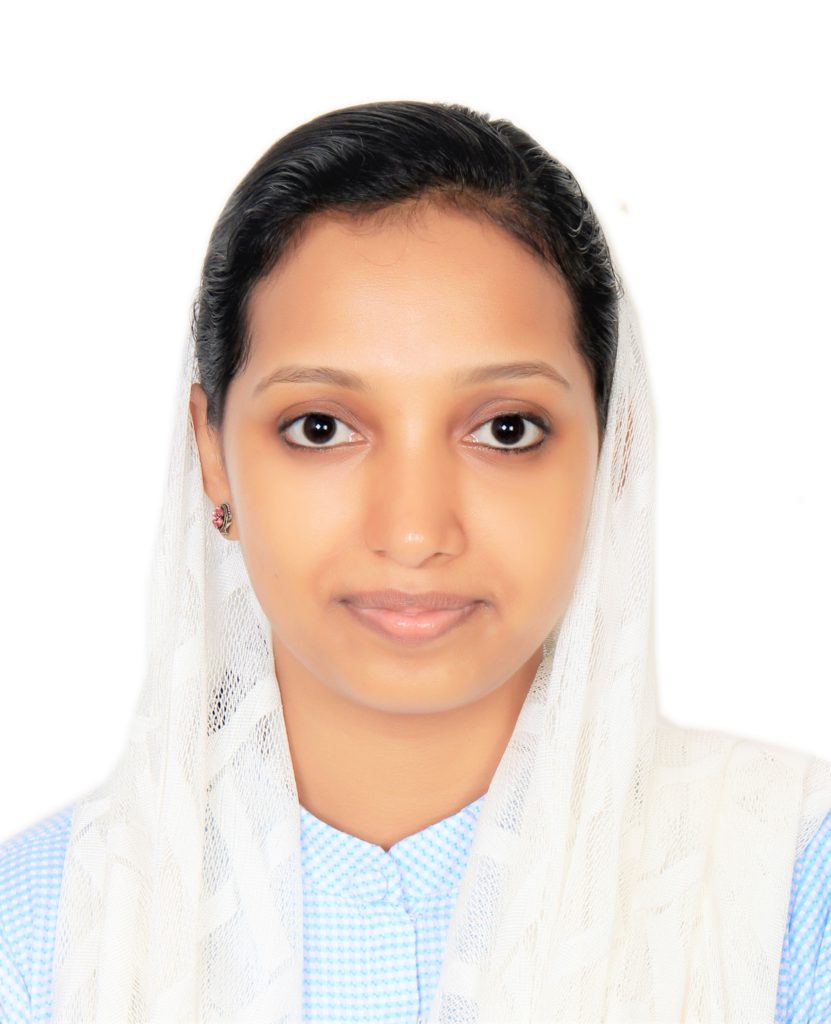
Dr. Nuzaiba P.M. is specialized in Fish Physiology and Biochemistry; she completed her postgraduate programs (M.F.Sc. and Ph.D.) from Fish Nutrition, Biochemistry and Physiology Division of ICAR-Central Institute of Fisheries Education, Mumbai. She has a bachelor’s degree in Fisheries Science (B.F.Sc.) from Tamil Nadu Fisheries University, Nagapattinam, Tamil Nadu. Dr. Nuzaiba has worked as a […]

Dr. AmruthaGopan has been working as Assistant Professor at School of Fisheries, CUTM, Parlakhemundi, Odisha, since 2019. She completed her Ph.D. in Fish Nutrition and Feed Technology in 2020 from ICAR-Central Institute of Fisheries Education, Mumbai. She secured M.F.Sc.(Master of Fisheries Science) in Fish Nutrition and Feed Technology in 2015 from the same institute.She graduated […]

Dr. NgairangbamSushila is an Assistant Professor in the Department of Aquatic Animal Health Management at the School of Fisheries, CUTM, Paralakhemundi, Odisha. She was awarded a PhD in 2020 on “Expression studies of Recombination Activating Genes during development and in response to bacterial infection in selected ornamental fish” at the aquatic animal health discipline of […]
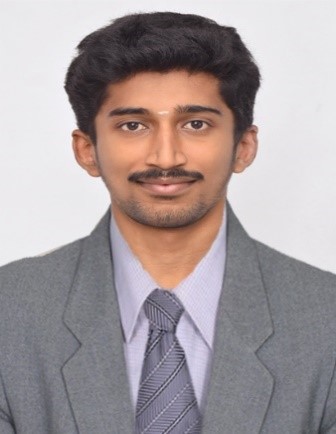
Mr. Sudarshan S. has completed his M.F.Sc from the Department of Aquatic Environment Management, ICAR-Central Institute of Fisheries Education, Mumbai, in 2020. His postgraduate research work on “Evaluation of toxicity of a commercial dye, Rhodamine B and its bioremediation by a green microalga Chlorella vulgaris”. He graduated B.F.Sc. (Bachelor of Fisheries Science) from Fisheries College […]
